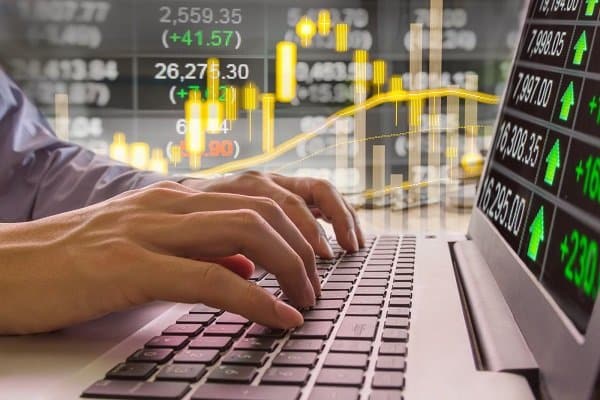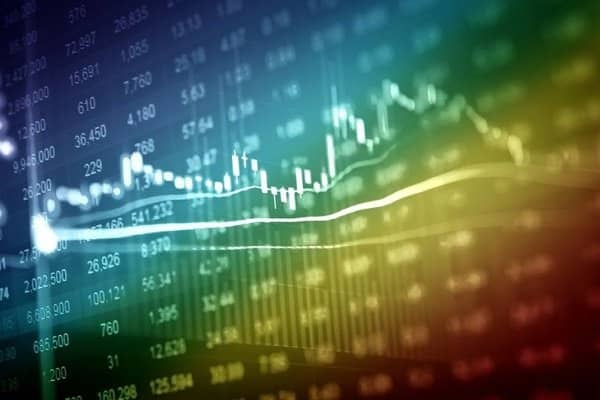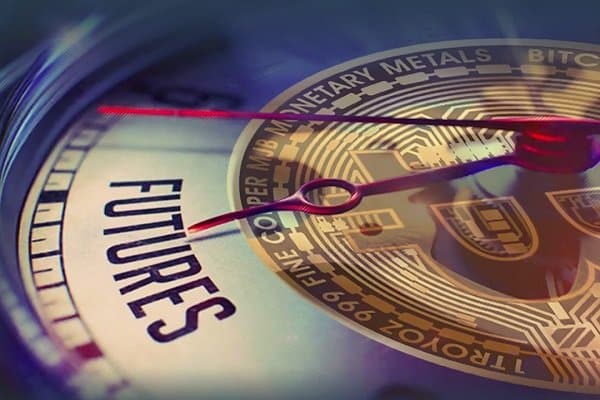The conclusion of futures contracts is far from new, but every year an increasingly actively used instrument in the stock market. Novice traders and investors often turn their attention to futures, realizing how promising this instrument is. The successful implementation of trade requires an understanding of its principles and specifics.
- Futures as a stock trading tool
- The difference between futures and stocks
- Types of contracts
- How it works?
- Leverage
- Where to work with futures?
- Registration and trading conditions on FORTS
- Getting access to the CME exchange
- Advantages and disadvantages
- What you need to know about futures specification?
- Futures Trading Strategies
- What is the danger for newbies?
- Frequently asked Questions
- How not to make a mistake when choosing a broker?
- Where can I find quote history?
- Where can I find a complete list of futures?
- What happens on the last day of trading?
- Do investors need futures?
- What are the features of choosing futures by date?
Futures as a stock trading tool
A futures contract is an agreement to buy or sell an asset on a specified date at a predetermined price. The underlying assets are bonds, currencies, interest rates and even the inflation rate on the Moscow Exchange market. The simplest example of a futures contract:
- The farmer grows and sells beans. This year it costs one hundred conventional rubles, but there are forecasts that the summer will be grateful, which means the harvest will be plentiful. This means that in autumn the supply will begin to exceed the demand for beans. Prices will drop.
- The farmer does not want to sell beans cheaper. He finds buyers in advance, who believe that the harvest will be poor, and prices will rise accordingly.
- They agree among themselves that in six months the farmer will supply the buyer with beans at a hundred conventional rubles per ton.
In this example, the farmer plays the role of a futures seller – he fixes the price and a certain date when the goods will be delivered to the buyer. This is the essence of futures trading. Trading is carried out on the stock market.
The difference between futures and stocks
The fundamental difference between these two instruments is in traded objects. It is this difference that generates frugality. The trader does not invest all the funds, but only a fixed amount of them – guarantee obligations. This is usually 12-13% of the value of the asset itself. The difference between futures and stocks is also easy to understand with an illustrative example:
- Angelina studied the most liquid (those that can be quickly sold at close to the market price) futures on the Moscow Exchange and decided to purchase either 100 shares or 100 futures for Gazprom shares. The current share price is 228 rubles.
- To make a purchase, Angelina will have to spend:
- for 100 shares – 228 x 100 = 22,800 rubles;
- for 100 futures – 228 x 100 x 12% = 2736 rubles.
- The amount for futures is much less. It is not the asset itself that is being purchased, but a dispute to change its price.
There are also other differences. Particularly stand out:
- Validity. It is limited for futures. That is, having bought a futures contract for 4 months, the obligations specified in the contract must be fulfilled in 4 months. Shares may not be sold at any time.
- Providing leverage. When purchasing a futures contract, leverage is provided (which is indicated in the contract). Loss or profit is calculated taking into account what exactly was acquired, although in the literal sense they were not acquired.
Types of contracts
There are two types of futures contracts – delivery and settlement. Private traders resort to the use of the second type of transactions. Futures, which is a settlement contract:
- is a tool for making money on the difference in prices;
- after the end of the fixed period of validity (expiration period) of the contract, the asset is not delivered in its natural form, but its variation margin is calculated.
The variation margin is a value calculated by the exchange, showing how much funds will be written off or credited to the trader’s trading account. As a result, participants in a futures contract either make a profit or remain at a loss.

How it works?
The point of trading is to buy low and sell high. It is the difference between the buying and selling prices that is the trader’s desired profit. At the end of the contract, one of the following occurs, depending on how the price of the product has behaved:
- the price remained unchanged – the financial condition of both the buyer and the seller did not change;
- the price has risen – the buyer has earned, and the seller has lost funds;
- the price fell – the buyer remained at a loss, and the seller received a profit (profit).
Any of the parties to the contract, realizing that at the end of the expiration period, he will suffer losses, will no longer be able to stop the process. The exchange controls the obligation of the parties to sell / buy goods at the time specified in the contract. The control is carried out by means of obligatory payment of an insurance deposit (collateral) by the parties to the agreement. The amount of the contract is not paid in full in advance, but the “deposit” on the accounts of traders are frozen. The size of the deposit is determined by the type and object of the transaction. The total amount of possible earnings on futures directly depends on the amount of invested funds. That is, the more contracts purchased, the greater the expected profit.
Leverage
In financial markets, situations often arise in which a broker lends money to a trader so that the latter can open larger positions. This action is called leverage and is used in futures trading. It is not expensive for brokers to provide such a service. Their possible losses are limited to the balance of the client’s trading account. If the loss equals the amount of funds in the trader’s account, the broker will suspend all current positions, not allowing the client to lose more than he has left. Leverage by itself does not affect the level of risk. It is affected by the size of the position opened by the bidder.
Where to work with futures?
Futures are traded on stock exchanges. For traders and brokers, exchange participants, the largest contracts are available directly. Those wishing to engage in futures trading need to open a trading account with a brokerage organization. It is exchanges that provide clients with platforms for access to trading, and regulate its process. Major futures exchanges in the world:
- Chicago Mercantile Exchange (CME);
- Chicago Board of Trade (CBOT);
- Euronext is an international European exchange;
- Eurex (European);
- Moscow Currency Exchange (MICEX).
In addition to the above, the financial market has a huge number of exchanges with different volumes of transactions. At the same time, contracts are standardized in terms of:
- quantities;
- quality;
- settlement periods.
These standards are not subject to change, they are permanent. Regardless of who is the seller at the time of a particular auction, and who is the buyer. Regardless of the exchange that organizes the auction.
Registration and trading conditions on FORTS
The Moscow Exchange established a platform for trading futures (having a fixed term) contracts – FORTS. To access the platform, register with a broker that has access to the Russian stock exchange.
The list of brokerage companies is available on the Moscow Exchange website – https://www.moex.com/.

- to start trading, an amount of 5,000 rubles or more is enough;
- an account is opened on the basis of presenting a passport and a TIN certificate (the broker may require other documents);
- the site charges a service fee of about 120 rubles per month;
- if no transactions have been made for the current month, the trader does not pay for the service;
- commission for the transaction is approximately 1 ruble;
- if the transaction is completed on the day of its conclusion, the commission will be 50 kopecks;
- the schedule of futures trading coincides with trading in shares on the Moscow Exchange – from 10:30 to 18:45 Moscow time;
- there is an additional (“evening”) session for traders focusing on foreign indices – from 19:00 to 23:50 Moscow time;
- expiration is carried out four times a year, as the final settlement with the owners of futures contracts;
- taxes (13% of income) are charged once a year (when the trader withdraws funds from the account).
Getting access to the CME exchange
In not the best times for the Russian economy, when futures for the assets of Russian companies are getting cheaper, traders are thinking about trading on foreign exchanges. Access to CME electronic platforms is open for trading via the Internet. To start trading on this exchange:
- it is necessary to choose a broker providing access – the choice of a broker is carried out by studying their official ratings on websites for investors (https://brokers.ru/, etc.);
- check the selected broker is available on the website of the CME exchange itself – https://www.cmegroup.com/, having previously registered on it;
- to register, most brokers will only need a passport and a TIN certificate (sometimes intermediaries ask for an extract from the bank where the client’s account is opened or a utility bill);
- registration with a broker involves filling out a questionnaire with questions about a criminal record, relatives working in government agencies, etc.
Advantages and disadvantages
Working with this type of investment instrument has positive and negative sides. Advantages of futures trading:
- the possibility of using contracts for speculation on changes in the price of the underlying asset;
- manufacturing companies get the opportunity to hedge (insure against unwanted changes) the prices of their goods;
- to conclude a contract, there is no need to pay the entire amount of its value;
- extensive access to various assets (from the raw materials market to cryptocurrencies);
- as a rule, high liquidity of contracts (but there are exceptions);
- standard form of contracts – all conditions are already written, it remains only to choose the appropriate option;
- most platforms provide the ability to automate trading.
The disadvantages of futures trading are:
- in the risk of loss by traders of an amount exceeding the initial payment due to the use of leverage;
- the term of the “life” of the contract is limited, and in order to extend it before expiration (to hold the position), it is necessary to purchase similar instruments of the next series, which will negatively affect the overall profit;
- not being able to clearly and accurately predict the “behavior” of prices and analyze the level of risk in each transaction, the volume of contracts and other indicators, it makes no sense to start trading futures;
- futures trading takes a lot of a trader’s time and attention.
What you need to know about futures specification?
All parameters of a futures contract are contained in a special document – the futures specification. The specification is developed by the exchange, but the relevant state regulators of the market are authorized to approve it or not. Since the futures contracts themselves are standard, only their differences are included in the specification. It is this information that a trader needs to make a decision related to futures trading. Understanding the specification (what exactly the parameters are indicated in it and what they affect) is one of the most important conditions for competent trading. Futures specification structure:
- Name. For example, a futures contract for gold.
- The size. The amount of the asset (in the corresponding equivalent) for which one contract is concluded. (5 tons of copper, 200 shares of a certain company, 3,000 euros, etc.).
- quality characteristic. It is indicated to fix the particular product for which the price is determined, what varieties of the asset can be allowed. As a rule, such a specific item is prescribed for raw (material) assets.
- Validity. It is determined based on the period specified by the contract, when the calculation or delivery is made.
- Quotation. Defines the asset price setting method and depends on its type:
- for goods, shares, currencies, the price is set by the amount of money (80 rubles for 1 euro, etc.);
- if the product is bonds and deposits, the price is calculated based on the yield;
- for assets in the form of portfolios of several types of goods, the price is the value of the price index for the portfolio itself;
- for non-standard assets, the price is calculated individually, based on the features.
- Teak. The minimum change in the price of an asset allowed by the contract, for example, 1 cent. Step — the limit of a single price change, which can be a multiple of only this step or tick.
- Estimated price. That asset price, which is the basis of both current and final settlements under the contract.

Futures Trading Strategies
There are not so many futures trading strategies. Among them, the most effective are:
- Hedging. Purchase of futures on interdependent assets. For example: an airline purchases futures contracts for oil to protect itself from the risk of incurring losses from an increase in oil prices.
- Acquisition of an asset. Buying a product at a price lower than it will be in the future.
- Speculation. Assuming an increase in the price of an asset, a trader buys it in order to sell it when the price rises.
- scalping. As a rule, automated speculation on short-term (up to milliseconds) price changes.
- Arbitration. Opening transactions that are opposite to each other. For example: buying a stock and selling a futures on it in order to benefit from the expiration of the futures.
What is the danger for newbies?
Beginner traders can lose all their money by diving headlong into the “trading pool”. Without enough experience, consider the dangers:
- the existence of fraudulent brokers (there are an uncountable number of them on the Internet);
- advertising that promises fabulous profits as a result of one click of the mouse;
- hacking of accounts and accounts due to a too easy password set by a trader or keeping passwords in the public domain;
- the trust of the trader regarding the calculation of the tax by the exchange – always keep a draft version of the independent calculation;
- own emotions ahead of the mind when making decisions.
Frequently asked Questions
Expanding the horizon of their own knowledge, each person inevitably encounters the area of ignorance. Accordingly, new questions arise. Below are the most common among novice investors and traders.
How not to make a mistake when choosing a broker?
It’s hard to figure it out at first. Consider the criteria:
- the presence of positive reviews and the absence of negative ones arouse suspicion – the reviews may be fake;
- sufficient period of the company’s work (plus the time of work with futures);
- check whether a brokerage firm has a license (there are special registers on the websites of the Moscow Exchange and the Bank of Russia);
- the nuances of the company’s work depending on its needs: spread (commission), leverage, necessary trading instruments and other parameters that are of interest to the trader, and not the broker company.
Where can I find quote history?
To develop a trading strategy and in general for a more complete training in trading, beginners in the field will definitely need a history of quotes for futures over the past years. Such data can be found on the official websites of brokers, as well as on specialized financial information websites, for example, https://www.finam.ru/.
Where can I find a complete list of futures?
Complete lists of futures commodities are published on exchange websites and specialized financial forums. Information is updated in a timely manner, it is possible to build lists using parameter filters.
What happens on the last day of trading?
The last day of trading (expiration) brings with it the removal of the futures from trading. Also, expiration is the day of fulfillment of the obligations agreed in the contract on the part of the buyer and seller. On the day of expiration on the settlement futures, the exchange sums up the results, according to the results, credits and debits funds from the accounts of the seller and the buyer. Under a deliverable futures contract, the seller receives funds for the goods, and the buyer receives the right to own them.
Do investors need futures?
Each investor decides for himself whether to use such a financial instrument as futures trading. When an investor decides to choose this instrument, he must take into account:
- futures – short-term transactions that require concentration and attention;
- holders of futures contracts do not receive passive income in the form of dividends;
- in case of a long-term loss, it will not be possible to “wait out” it (until the price changes in a direction favorable for the investor) (futures are limited in time).
What are the features of choosing futures by date?
Some traders, when choosing a futures contract as a priority parameter for making a deal, stop at those futures, the expiration date of which is scheduled for the near future. It is on this day that the highest liquidity is observed. Most of the contracts have a period of three months. The execution of most contracts occurs on the 15th. By choosing futures that expire earlier than others, there is more chance of making a profit (less time is left for price fluctuations). This is not universal, but a fairly common choice. Aristotle also said that “fear makes people think.” Understanding the risks of futures trading encourages beginners to constantly educate themselves in the competitive world of securities. Each new step should be done consciously and carefully, analyzing the consequences.




